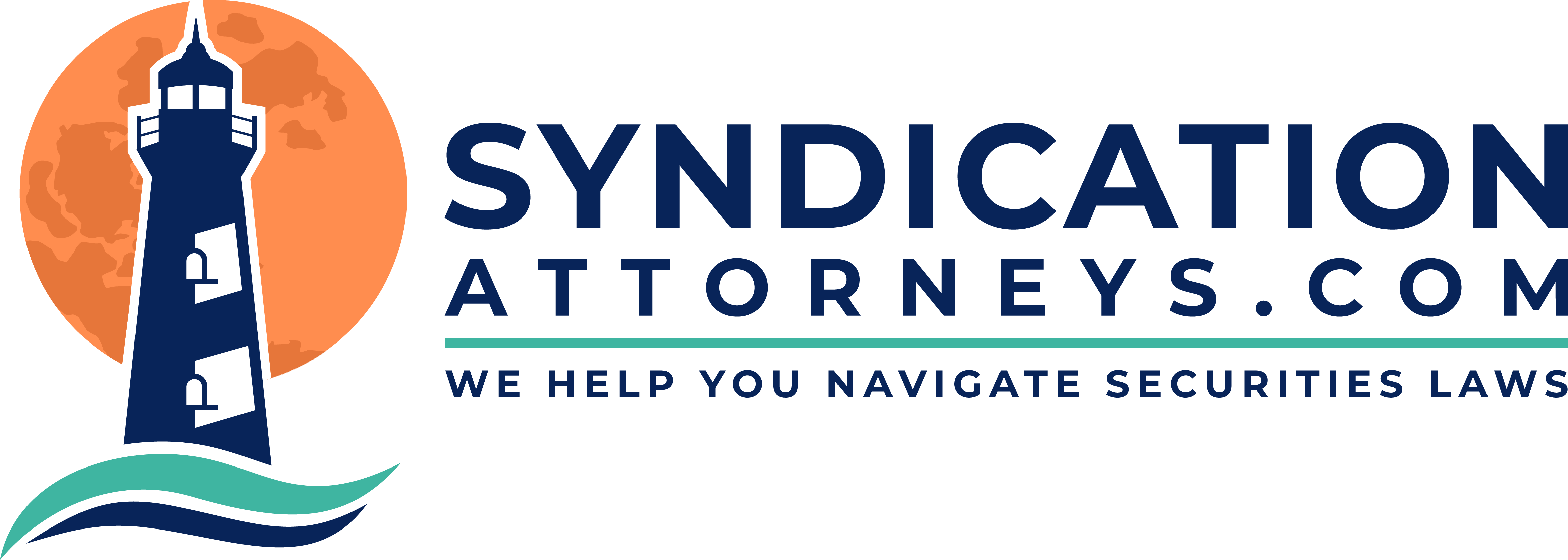Below are the issues you need to consider when including non-U.S. Persons in a U.S. securities offering:
Securities Compliance
First, you need to determine whether the investors are actually Non-U.S. Persons.
For the purpose of U.S. Securities Laws, a Non-U.S. Person is someone who is:
- Not a U.S. citizen,
- Not a legal resident of the U.S.,
- Not living in the U.S., and
- Will be wiring their funds from an offshore account.
If you have investors who meet all of these tests, then they are Non-U.S. Persons.
There is a special exemption called Regulation S for a securities offering that will include Non-U.S. Persons. The benefit is that Regulation S doesn’t have any financial requirements for Non-U.S. Persons, so anyone can make an investment. If your investors don’t meet all 4 of these tests, however, they are considered a U.S. Person, subject to the same Ssecurities laws and financial qualifications that are required of U.S. investors.
Most private U.S. securities offerings use the Regulation D, Rule 506(b) or Rule 506(c) exemptions. For someone to qualify under Rule 506(b), they must qualify as accredited or “non-accredited but sophisticated,” but this exemption doesn’t allow advertising. Another option is the Regulation D, Rule 506(c) exemption, which allows advertising but is only available to verified accredited investors.
You can combine a Regulation D, Rule 506(b) offering and a Regulation S offering using the same PPM. However, you would need separate subscription agreements for your U.S. investors and for your Non-U.S. investors.
If you are combining a Regulation D, Rule 506(c) offering and a Regulation S offering, you will need a separate PPM and subscription agreement. This is because of a rule within Regulation S that prohibits advertising a Regulation S offering in the U.S. The best practice for this is to have two separate offerings – one under Regulation S and one under Regulation D, Rule 506(c), with a separate PPM and subscription agreement for each one. However, investors could still invest in the same entity, usually an LLC or a Limited Partnership.
Tax Consequences for Non-U.S. Persons
Additionally, however, there could be U.S. tax consequences. Every time profit distributions are paid to Non-U.S. Persons, the United States IRS requires that certain taxes be withheld (similar to a payroll tax) and sent to the IRS. The consequences for not doing it correctly are that the person who signs the check remains personally and primarily responsible for any U.S. taxes that the Non-U.S. Person owes but fails to pay. Thus, it’s important to work with an international CPA that understands The Foreign Investment in Real Property Tax Act of 1980 (FIRPTA).
When Non-U.S. Persons invest in U.S. real property (whether it’s a syndicate or a fund), they may be required to obtain a Foreign Taxpayer Identification Number from the U.S. IRS. They would then need to file their own U.S. tax return in order to get a refund, which may be available if there is a tax treaty with their country that allows for that. Your investors should be advised to seek their own international tax counsel before investing as a Non-U.S. Person in a U.S. securities offering.
Many Non-U.S. Persons prefer to create their own U.S. entity (such as an LLC or corporation) that makes the investment in your U.S. company, rather than obtaining a Foreign Taxpayer Identification Number for themselves (as individuals), or as a non-U.S. entity.
U.S PATRIOT Act / Homeland Security
Certain “sanctioned” or “blocked” foreign nationals, nationals or residents of sanctioned countries, or persons with more than 15% of their assets invested in sanctioned countries designated by the U.S. government are prohibited from directly or indirectly investing in a U.S. company. These restrictions are aimed at persons or countries identified by the United States as rogue nations, terrorist facilitators, weapons of mass destruction (WMD) proliferators, money launderers, drug kingpins and other national security threats.
Collectively, these restrictions are known as U.S. “anti-money laundering” (AML) laws. A list of prohibited persons and countries is maintained and periodically updated by the U.S. Department of Treasury, Office of Foreign Assets Control (OFAC) under the U.S.A. PATRIOT Act and related acts. You can search this list yourself: Click here.
An issuer of securities to Non-U.S. Persons will have strict liability for conformance with these requirements. Failure to comply may subject the issuer to accusations of participation in such activities. As a safeguard, for any Non-U.S. Person, the issuer must inquire, verify and maintain records of:
- The identity of each investor and whether he or she is prohibited from investing in the United States by obtaining a copy of a passport or other applicable residency or company documentation and verifying it against such lists, and
- If the funds are pooled from other investors, their identities, and whether the individual investors are so prohibited.
Depending on the circumstances, an issuer may be obligated to file a Suspicious Activity Report (SAR) with the Financial Crimes Enforcement Network (FinCEN), a bureau within the U.S. Department of Treasury, if:
- A transaction is conducted or attempted to be conducted by, at, or through the issuer’s investment opportunity;
- The transaction exceeds $5,000; and
- The issuer knows, suspects, or has reason to suspect that the transaction, among other things, involves funds or is intended to disguise funds derived from illegal activity, or involves the use of the investment to facilitate criminal activity.
Suspicious activity reporting information is available on FinCEN’s website: click here.
In addition to the above requirements, U.S. banks may be required to report to various federal and/or state agencies certain deposits into a U.S. bank account by a Non-U.S. Person. An issuer should check with its banking institution to determine the applicable banking rules and whether deposits from its Non-U.S. Persons will trigger such reporting. Finally, exchange rates must be factored into each transaction involving a foreign investor.
What if the Non-U.S. Person Simply Forms a U.S. Entity?
It may be possible to shift some of the burdens regarding compliance with FIRPTA and AML laws if the Non-U.S. Person forms and funds a U.S. limited liability company, partnership or corporation that becomes the purchaser of the securities. In the process of setting up the legal entity in the United States — which should be done with his or her own, independent legal and tax counselors — the foreign investor’s entity will be considered a U.S. person.
However, the issuer has a fiduciary duty to all of its investors to protect their investment, so it would be incumbent on the issuer to conduct the same investor identification of all investors, regardless of whether they are U.S. or Non-U.S. Persons.
An issuer intending to include Non-U.S. Persons as investors should:
- Adopt and implement a rigorous investor identification and recordkeeping program;
- Hire an international CPA versed in tax withholding for foreign investors who can ensure that the issuer maintains the appropriate books, records and tax filings for the offering;
- Consult with a securities attorney (or equivalent) in the foreign country regarding the proposed offering; and
- Recommend that all Non-U.S. Persons obtain the advice of their own financial advisers before making an investment decision.
The issuer should always verify whether an investor is a U.S. Person or Non-U.S. Person, and if they are a foreign investor, whether they are prohibited from investing in the United States. Further inquiry and verification will be required if the issuer suspects or has reason to believe that the investor is among the list of prohibited persons or from a sanctioned country or that the investor has pooled funds from other Non-U.S. Persons in order to make the investment.
Risk versus Reward
While there may be advantages to including foreign investors in a Regulation D securities offering, doing so likely will increase the overall accounting and legal expenses associated with the company, and it may increase the issuer’s liability risks. As always, a risk-versus-reward analysis should be conducted before an issuer decides whether to include Non-U.S. Persons as investors in a Regulation D securities offering.
Further, if all investors in a single offering will be Non-U.S. Persons, a Regulation S offering may be more appropriate.
If you’d like to schedule a consultation about including Non-U.S. Persons in your securities offering, please click here.

